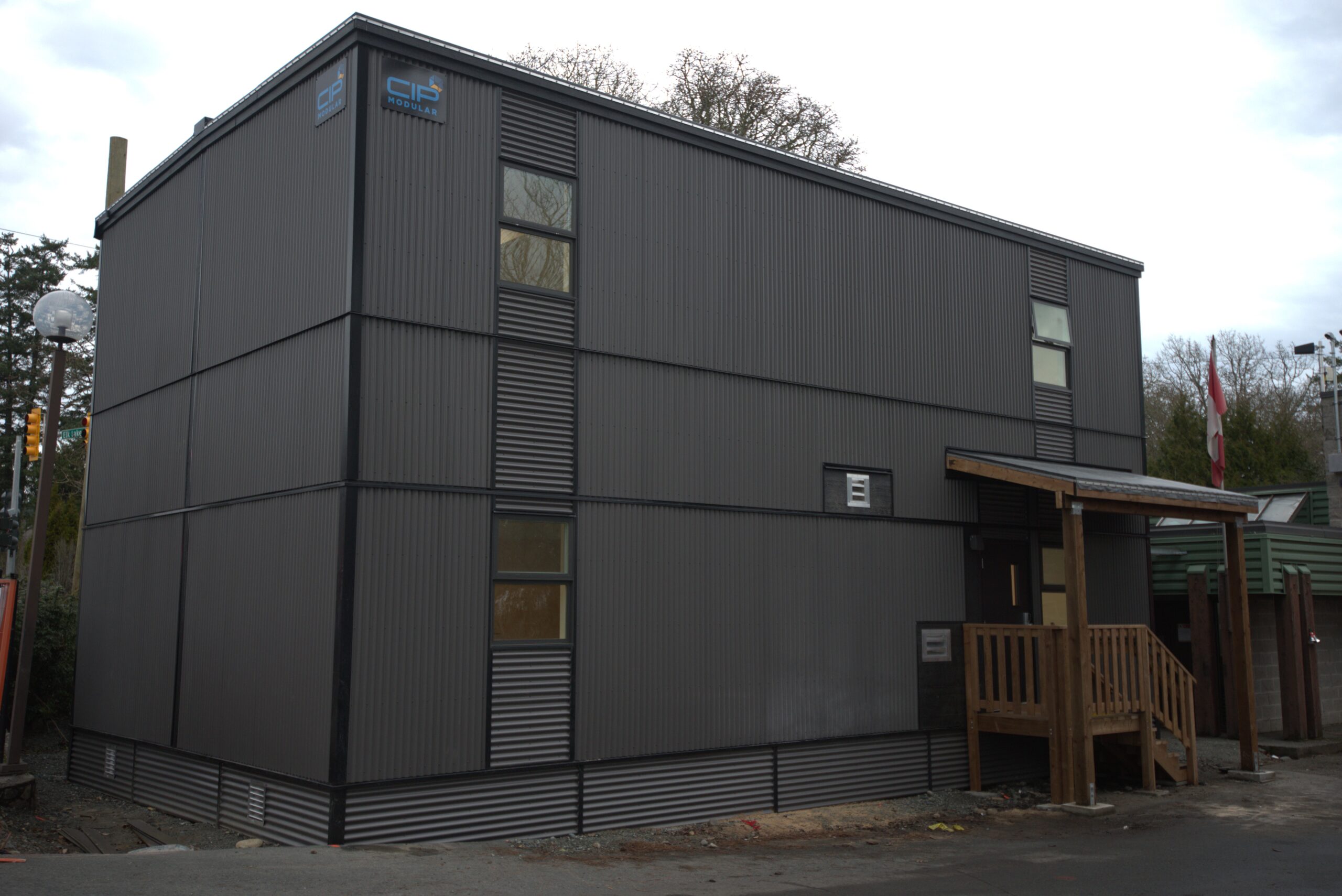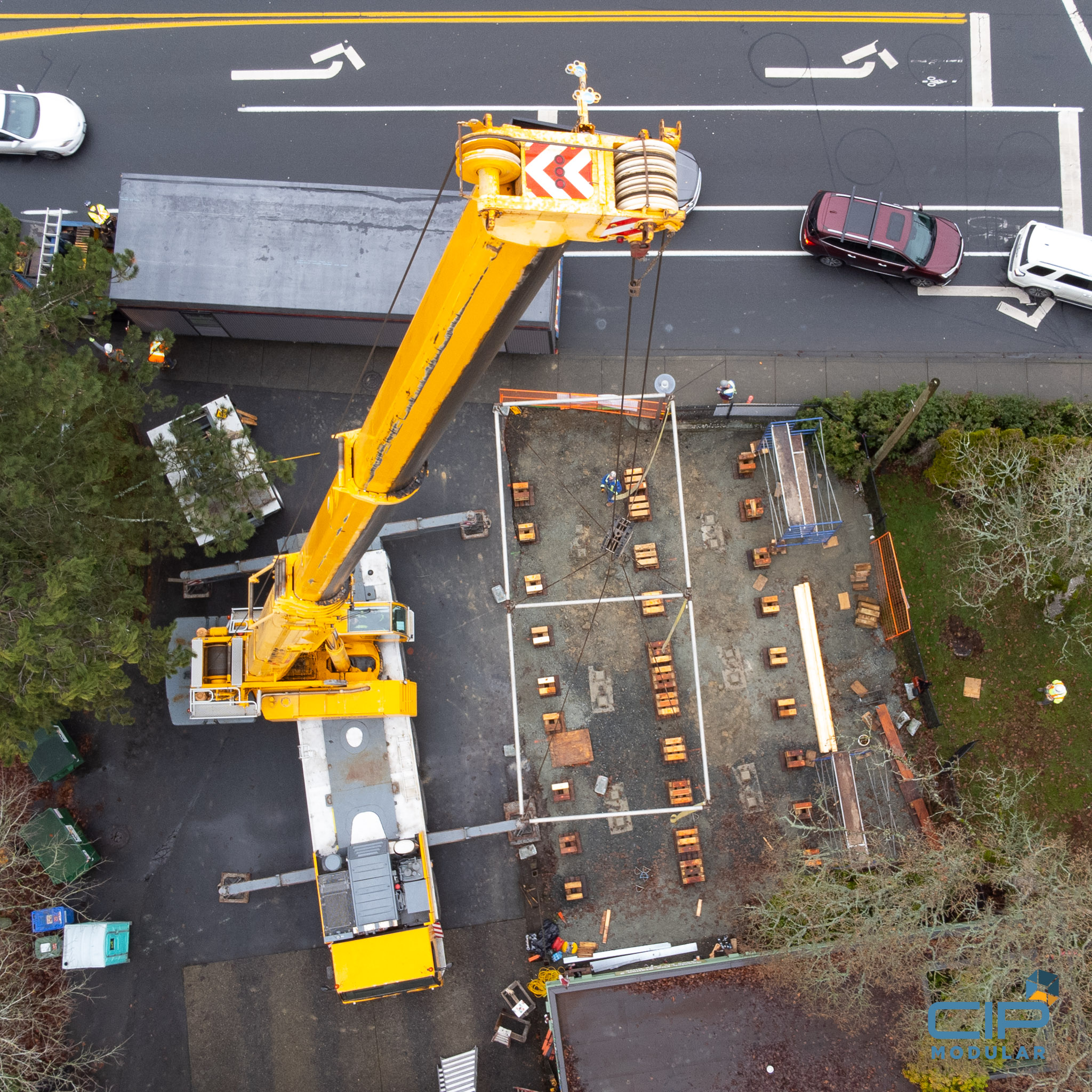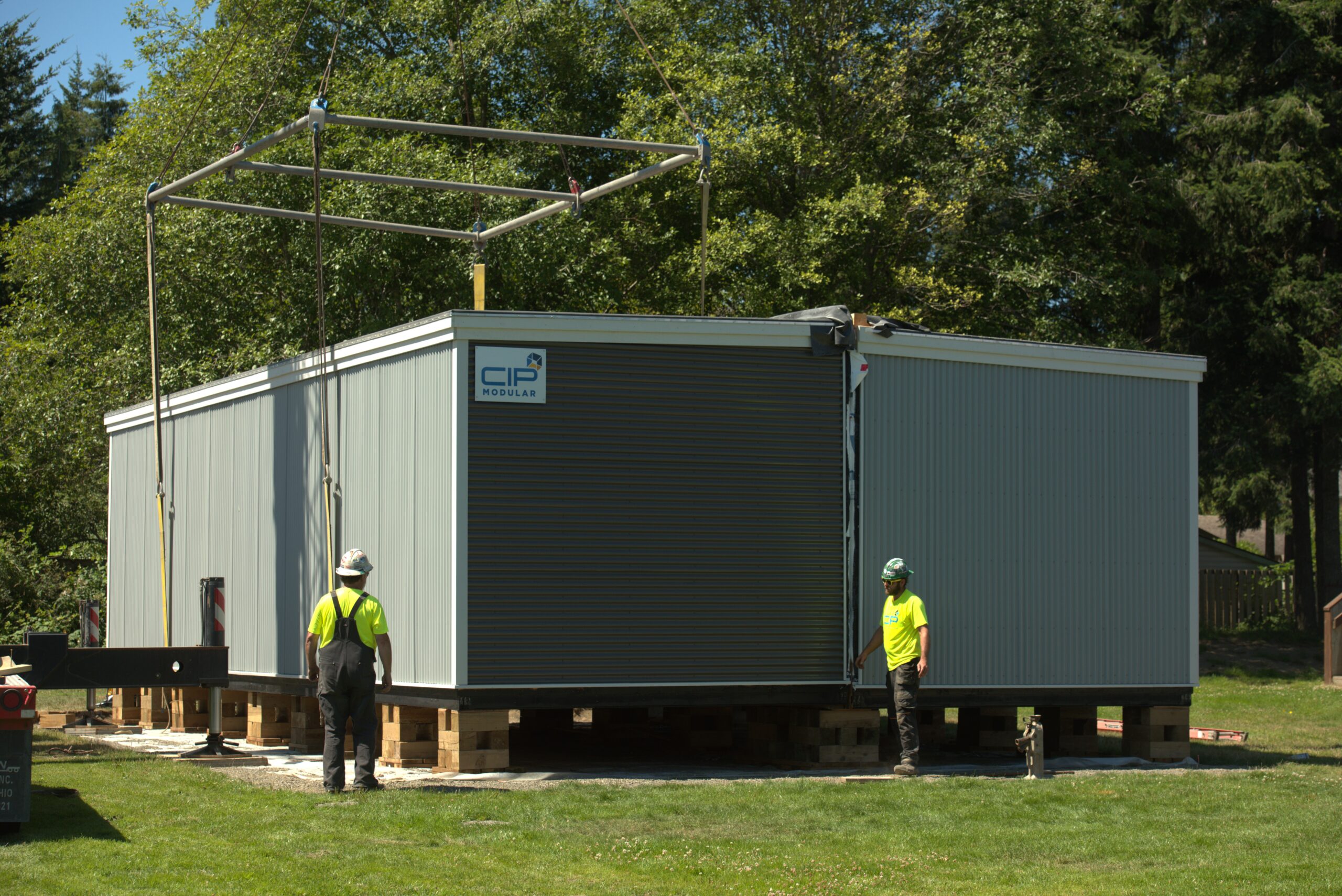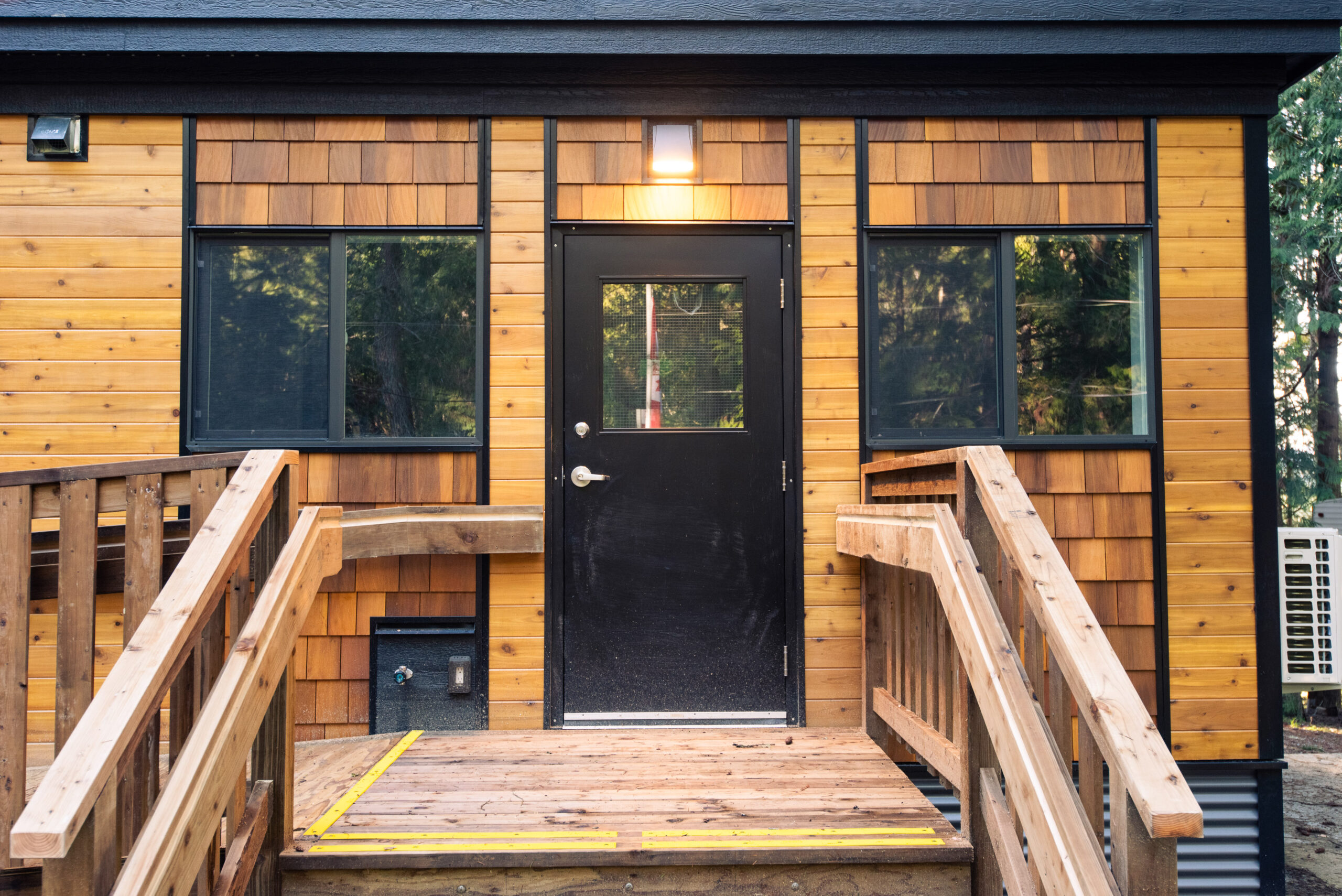Emergency response presents a unique construction challenge that traditional building methods simply can’t meet. When wildfires force evacuations, floods damage infrastructure, or other disasters strike, communities need functional buildings immediately. The usual luxury of planning, permitting, and lengthy construction timelines disappears.
This is where modular construction shows its real strength. While emergency response often gets associated with those basic FEMA trailers or temporary structures, properly designed modular buildings offer something much more substantial.
Understanding the Emergency Timeline Challenge
The math of disaster recovery is unforgiving. A school damaged by flooding needs replacement classrooms before the next semester starts. Evacuees need housing that’s safe and dignified, not just weatherproof. Emergency services need operational facilities while they coordinate response efforts.
Traditional construction follows a linear sequence that takes months. You design, permit, excavate, build foundations, frame walls, install systems, finish interiors, and inspect everything before occupancy. Each step waits for the previous one to complete.
Modular construction breaks this linear dependency. While site crews prepare foundations and handle permits, our factory teams build complete structures in controlled conditions. The two processes run in parallel instead of sequence, cutting total time by half or more.
Why Permanent Modular Makes Sense for Emergencies
The distinction between temporary emergency structures and permanent modular buildings matters more than most people realize. Basic emergency shelters serve their purpose for immediate crisis response, but recovery often takes years, not weeks.
Our permanent modular buildings carry CSA A277 certification, which means they meet the same building codes as site-built structures. They use standard building materials—drywall interiors, commercial flooring, proper insulation systems, and full HVAC integration. These aren’t upgraded trailers. They’re real buildings that happen to be built in sections and assembled on site.
This approach provides the speed of emergency deployment with the quality and durability communities need for extended recovery periods. A school district using our buildings for fire-damaged classrooms gets structures that can serve students properly for years while permanent reconstruction happens.
Applications Across Emergency Scenarios
Different emergency situations create different building needs, but modular construction adapts to most requirements effectively.
For emergency housing, our buildings provide private, dignified accommodations that feel like real homes rather than institutional shelters. Families dealing with displacement need stability, and proper modular housing delivers that while remaining deployable within emergency timeframes.
Educational continuity matters enormously during recovery. When schools are damaged or destroyed, students can’t wait months for replacement facilities. Modular classrooms maintain normal learning environments and can be configured to match the specific needs of different grade levels or specialized programs.
Health and emergency services need operational facilities immediately. Whether it’s a temporary clinic serving displaced populations or a command center coordinating response efforts, modular buildings provide the space, power, and communications infrastructure these operations require.
The Reality of Rapid Deployment
Speed claims in construction often prove optimistic, but emergency response creates circumstances where rapid deployment becomes genuinely achievable. The urgency removes many of the delays that typically slow building projects.
Permitting processes get streamlined during declared emergencies. Site preparation can begin immediately while building manufacture proceeds. Utility connections receive priority attention from local services. The usual scheduling conflicts that extend normal construction disappear when community recovery depends on quick completion.
We’ve delivered functional buildings in under two weeks from contract signing to occupancy. That timeline requires favorable conditions—accessible sites, cooperative weather, and responsive local utilities—but it demonstrates what becomes possible when emergency response removes typical project obstacles.
Building Quality That Lasts Beyond the Crisis
Emergency response buildings face a common problem. They’re deployed quickly during crisis situations, then expected to serve communities for months or years while permanent solutions develop. Many temporary structures fail this extended service test, creating ongoing problems for communities already dealing with disaster recovery.
Our permanent modular approach addresses this challenge directly. Buildings arrive with full insulation packages, efficient heating and cooling systems, durable interior finishes, and proper weatherproofing. They’re designed to provide comfortable, functional spaces whether the deployment lasts two months or twenty years.
This quality approach costs more than basic emergency shelters, but it proves economical over time. Communities avoid the expense and disruption of replacing inadequate temporary structures. More importantly, people living or working in these buildings get proper environments that support normal activities rather than just basic shelter.
Flexibility for Changing Needs
Emergency response situations evolve constantly, and building requirements change as recovery progresses. Modular construction offers flexibility advantages that matter during these dynamic periods.
Buildings can be reconfigured internally as needs change. A structure initially set up for emergency housing might later serve as office space for reconstruction planning. The same building could eventually relocate to serve other community needs once the immediate emergency passes.
We offer both purchase and leasing options to match different recovery scenarios. Some communities need buildings for specific limited periods and prefer leasing arrangements. Others want permanent additions to their infrastructure and choose to purchase. The same building quality works for both approaches.
Supporting Multi-Site Recovery Efforts
Large-scale disasters often affect multiple communities simultaneously, creating coordination challenges for recovery efforts. Modular construction can scale to meet these broader requirements in ways that traditional construction cannot.
Our manufacturing capacity allows us to produce multiple buildings simultaneously for coordinated deployment. School districts serving several communities can get replacement classrooms delivered on synchronized schedules. Regional health services can establish multiple clinical locations to maintain coverage during infrastructure rebuilding.
This scaling capability becomes particularly valuable for organizations like school boards or health authorities that need to restore services across wide geographic areas affected by the same disaster event.
Long-Term Value in Emergency Preparedness
The most effective emergency response happens before emergencies occur. Communities that establish relationships with modular building providers and understand deployment processes can respond much more quickly when disasters strike.
Pre-positioned contracts, site identification, and utility planning all reduce deployment time when emergencies happen. Communities can prepare standard building specifications for likely scenarios—emergency classrooms, health facilities, or housing units—and have deployment plans ready for implementation.
This preparedness approach transforms emergency response from reactive scrambling to organized deployment of predetermined solutions. The difference shows up in faster community recovery and better outcomes for affected populations.
The Practical Reality
Emergency situations don’t offer the luxury of perfect solutions, but they demand functional ones. Modular construction provides communities with buildings that work properly from day one of deployment while offering the flexibility to adapt as recovery needs evolve.
The key lies in choosing modular providers who understand that emergency deployment requires the same quality standards as normal construction, just delivered on compressed timelines. When disasters strike, communities need infrastructure that performs reliably under stress, not temporary fixes that create additional problems.
Emergency response isn’t about compromising on building quality. It’s about delivering real buildings fast enough to matter when people need them most. That’s exactly what properly executed modular construction accomplishes.




